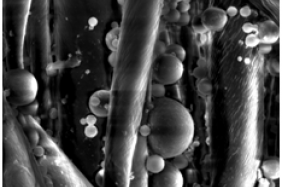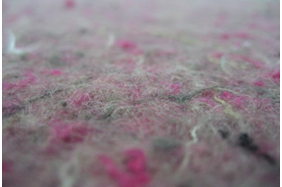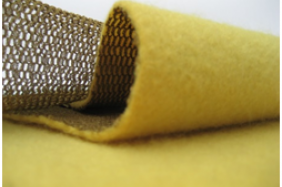Science
- Home
- Science
- Excellence
- Advanced materials and technologies
-
Excellence
- Advanced materials and technologies
- Surface chemistry and nanotechnology
- Photonic and Laser Technology
- Metrology and measurement technology
- Environmental Research and energetics
- Organic materials and nanoenginering
- Electrochemical energy conversion technologies
- Research of the structure and composition of solid materials
- Long-Term Programs
- Scientific publications
- Conferences
- Projects
Advanced materials and technologies
The escalating the need for innovative functional materials demonstrating distinct properties in diverse applications is driving the advancement of fabrication technologies in various fields.
Within the Department of Functional Materials and Electronics, the efforts are underway to develop fabrication technologies, such as pulsed injection MOCVD, magnetron sputtering, and pulsed laser deposition, in order to create advanced thin films and nanostructures. These materials comprise ferromagnetic oxides, Heusler alloys, high-temperature superconductors and 2D semiconductors such as graphene. The fabricated compounds are tailored with specific properties to be used in various applications (spin valves, magnetic field sensors, biosensors, high current limiters and more). Moreover, the numerical calculations as well as experimental investigations of prepared structures and biological cells are performed using various computational tools and experimental techniques. The responses of prepared materials and nanostructures to external stimuli (electrical, magnetic, light, microwaves, etc.) are also studied in the Department. In addition, the Department of Functional Materials and Electronics provides a magnetic field performance verification service for industrial permanent magnets using high-precision digital magnetic induction meters, and also develops and manufactures specialized magnetic field sensors and meters according to the customer's needs. Simultaneously, our research initiatives aim to understand the impact of electrical pulses on plasma membrane permeability across a spectrum of cells, including bacteria, yeast, algae, and mammalian cells. In the pursuit of attracting commercial attention, our investigations extend to studying how plasma membrane permeability influences the survival of microorganisms equipped with cell walls. We employ specialized testing methodologies and concurrently develop and implement electroporation-based technologies geared towards managing harmful microorganisms. Our efforts also encompass the analysis of the effects of short nanosecond electrical pulses on intracellular signals. Simultaneously, our department is committed to exploring the influence of abiotic factors, such as light, temperature, and electric fields, on cellular signals. To cater specifically to commercial interests, we utilize innovative optically transparent polymeric materials for photodynamic therapy and actively contribute to the advancement of organ-on-a-chip devices. These endeavours are designed to explore electrically induced intercellular signals, with applications spanning scientific research, industry, and biomedicine. Moreover, the department also develops and manufactures specialized electroporators according to the customer's needs.
In the Department of Physical Technologies, well balanced scientific investigations of advanced materials and modern technologies create original ways in research and development (R&D) of future emerging applied systems. Fusion of the electronic and photonic processes in these systems is the fundamental basis for integration of the semiconductors and optoelectronic devices within the hybrid modules acceptable to digitise physical and chemical characteristics. Highly attractive ways to make new multi-functional elements emerged from attempts to combine the usual three-dimensional (3D) materials with the two-dimensional (2D) ones. New concepts based on the van der Waals controlled integration principles was proved being highly promising because these structures can change the parameters of multi-functional hybrid system in unexpected ways. Technology studies result in methodically adapted CMOS compatible processes acceptable for fabrication of prototype devices including assembled IR lasers and photonic elements. Deep understanding of the technology and the device physics allows us to develop high-tech multi-component system combining hybrid and monolithic integration of the elements into single platform. Meeting the specific needs of the end users, a system platform can be adapted for an on-line non-destructive quality control of products and processes. Conversion of the features of processes and things into a digitised output data stream by the multi-functional semiconducting systems opens highly attractive niche in the Internet of Things (IoT).
In the Department of Textile Technologies, the application of multidisciplinary research opens new opportunities for developing innovative textile technologies, high added value solutions and products tailored to individual needs. The results of such research can contribute to expanding the application of textile products in areas related to health, active lifestyles, and personal safety. Textile technologies are developed in accordance with the Green Course strategy, seeking to protect nature, conserve energy resources and reduce CO2 emissions. For this, the latest achievements in information technologies, mechatronics, the development of advanced materials, bio- and nano-technologies are combined. Textile research focuses on providing (multi)functional properties to textile materials through surface treatment with low-pressure gas plasma, micro- and nano-structure particles, organic conductors, microporous polymer coatings and films. Textiles for defense purposes are also developed at the Department. This involves the research and development of textile products that ensure protection against mechanical and ballistic impact, as well as the development of processes for creating adaptive camouflage and the research of anti-radar materials for military needs. The ongoing development of electronic textiles involves issues related to optimizing electronic systems, developing dynamic models, exploring methods for integrating systems into conductive textiles and addressing various design considerations.
- Department of Functional Materials and Electronics (Head dr. N. Žurauskienė)
- Department of Physical Technologies (Head dr. A. Šetkus)
- Department of Textile Technologies (Head dr. J. Baltušnikaitė-Guzaitienė)



